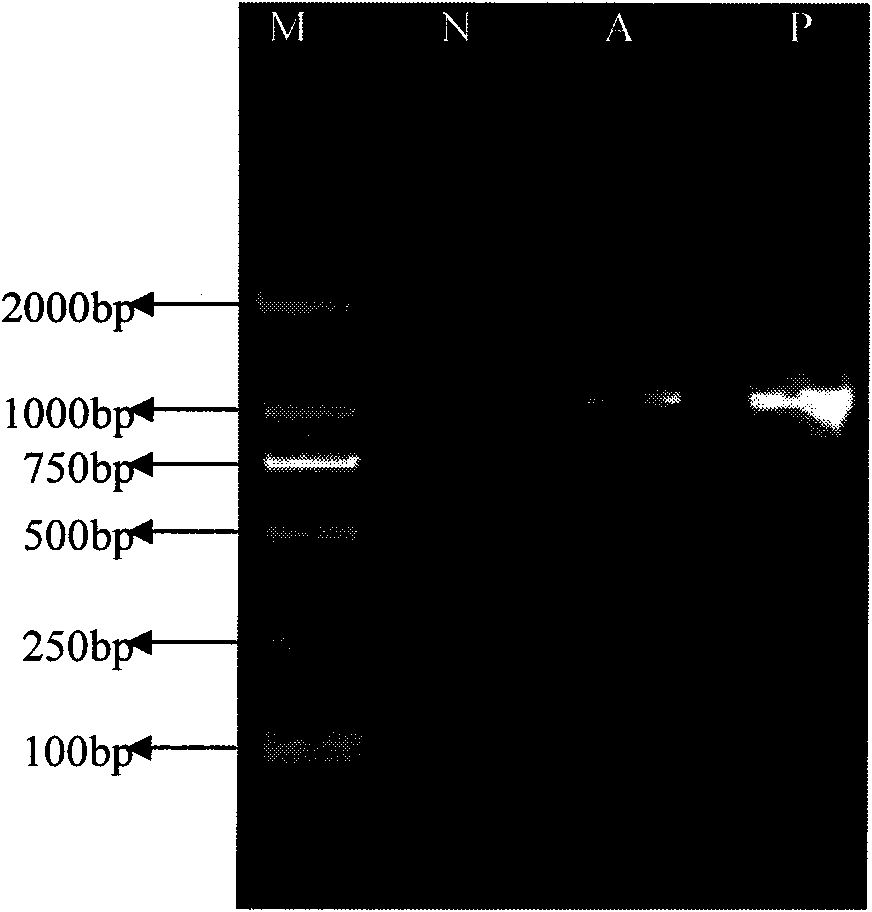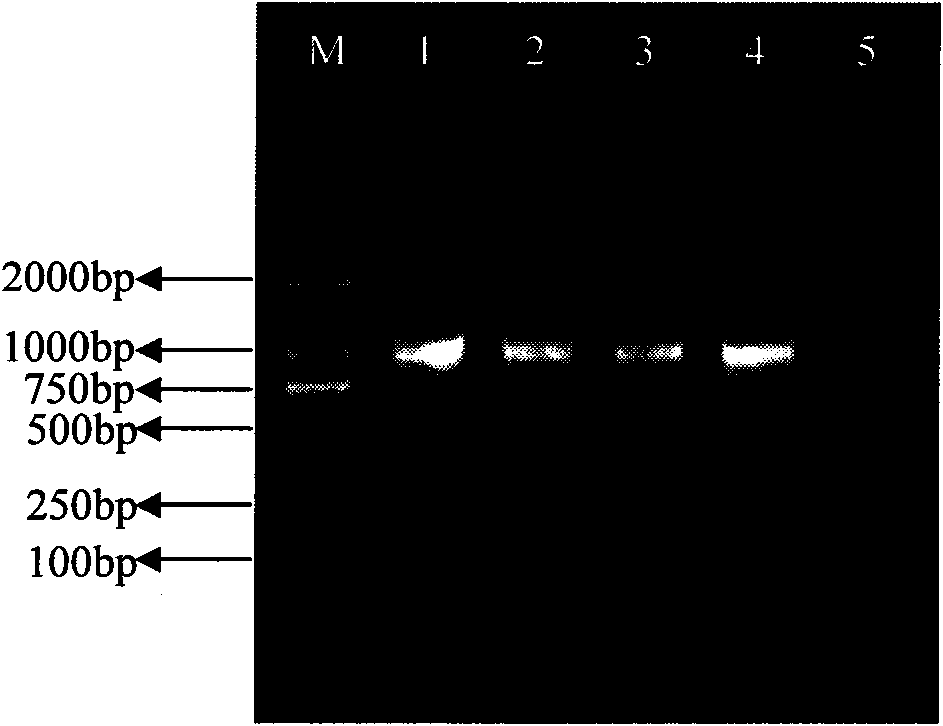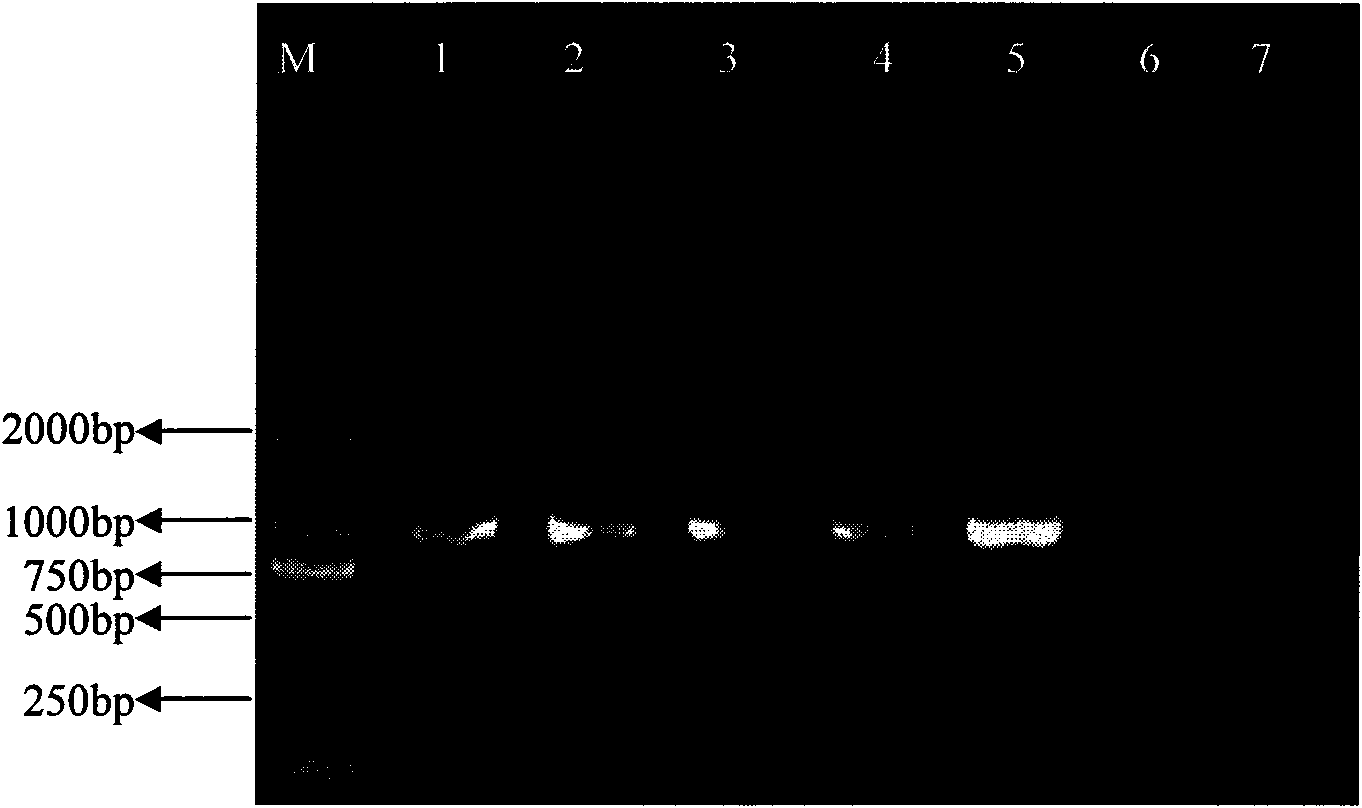Primer for amplifying gene specific area of DNA gyrase B subunit gene (gyrB) in legionella pneumophilia and application thereof
A Legionella pneumophila and gene technology, applied in the field of nucleotides, can solve the problems of difficult isolation and culture of Legionella, high price, unfavorable rapid diagnosis, etc.
- Summary
- Abstract
- Description
- Claims
- Application Information
AI Technical Summary
Problems solved by technology
Method used
Image
Examples
Embodiment 1
[0080] Example 1 : Genome Extraction
[0081] In BCYE plate medium at 37°C, 5% CO 2 Cultivate Legionella pneumophila overnight, scrape the colony with 50mM Tris-HCl (pH8.0), and collect the bacteria by centrifugation. The cells were resuspended with 500ul 50mM Tris-HCl (pH8.0) and 10ul 0.4M EDTA, incubated at 37°C for 20 minutes, and then 10ul 10mg / ml lysozyme was added to continue the incubation for 20 minutes. Then add 3ul 20mg / ml proteinase K, 15ul 10% SDS, incubate at 50°C for 2 hours, then add 3ul 10mg / ml RNase, and incubate at 65°C for 30 minutes. Add an equal volume of phenol to extract the mixture, take the supernatant, and then extract twice with an equal volume of phenol: chloroform: isoamyl alcohol (25:24:1), take the supernatant, and then extract with an equal volume of ether. Extract to remove residual phenol. The supernatant was used to precipitate DNA with 2 times volume of ethanol, and the DNA was rolled out with glass wool and washed with 70% ethanol, and...
Embodiment 2
[0082] Example 2 : Amplification of the gyrB gene in Legionella pneumophila by PCR
[0083]gyrB was amplified by PCR using the genome of Legionella pneumophila as a template. Since the full length of the gyrB gene is 2418, which exceeds the length that can be read by a DNA sequencer at one time, the gyrB gene is divided into three segments for cloning and sequencing in the present invention. Three pairs of primers were designed according to the conserved region of gyrB: upstream primer (5′-TAGCATAATACGGCAAGAGGG-3′), downstream primer (5′-TGGCATACCCTTCGTTTT-3′); upstream primer (5′-ATGGCTATCAAGAAACTAT-3′), downstream primer Primer (5'-TCTTCTCTTGTACCGCTT-3'); upstream primer (5'-TAAAGCGTGGAAAGCAGG-3'), downstream primer (5'-ACAGGAAGTGAACTAAGGG-3'). The PCR reaction program is as follows: pre-denaturation at 94°C for 5 minutes; then denaturation at 94°C for 30 seconds, annealing at 50°C for 30 seconds, and extension at 72°C for 1 minute, thus performing 30 cycles; finally, ext...
Embodiment 3
[0084] Example 3 : Construction of clones of gyrB gene
[0085] 1. Obtaining the connection product:
[0086] The PCR purified product was mixed with Promega's 3×10 -3 The pGEM-T-Easy vector was ligated at 16°C for 24 hours, with a total volume of 10 μl, which contained 1 μl of 10×buffer and 0.5 units of T4 DNA ligase to obtain the ligation product.
[0087] 2. Preparation of competent cells:
[0088] Competent cells Escherichia coli DH5α were prepared according to the method provided by Bio-Rad. Take a single colony of Escherichia coli DH5α in 5ml of LB medium, culture it at 180rpm for 10 hours, take 2ml of the culture and transfer it to 200ml of LB medium, shake vigorously at 37°C and 250rpm to about OD6000.5, then freeze The bath was cooled for 20 minutes and centrifuged at 4000 rpm for 15 minutes at 4°C. Drain the supernatant, blow off the bacteria with 200 ml of cold ice-precooled deionized sterilized water, and centrifuge at 4000 rpm for 15 minutes at 4°C. Blow of...
PUM
| Property | Measurement | Unit |
|---|---|---|
| Upstream primer | aaaaa | aaaaa |
Abstract
Description
Claims
Application Information
 Login to View More
Login to View More - R&D
- Intellectual Property
- Life Sciences
- Materials
- Tech Scout
- Unparalleled Data Quality
- Higher Quality Content
- 60% Fewer Hallucinations
Browse by: Latest US Patents, China's latest patents, Technical Efficacy Thesaurus, Application Domain, Technology Topic, Popular Technical Reports.
© 2025 PatSnap. All rights reserved.Legal|Privacy policy|Modern Slavery Act Transparency Statement|Sitemap|About US| Contact US: help@patsnap.com



